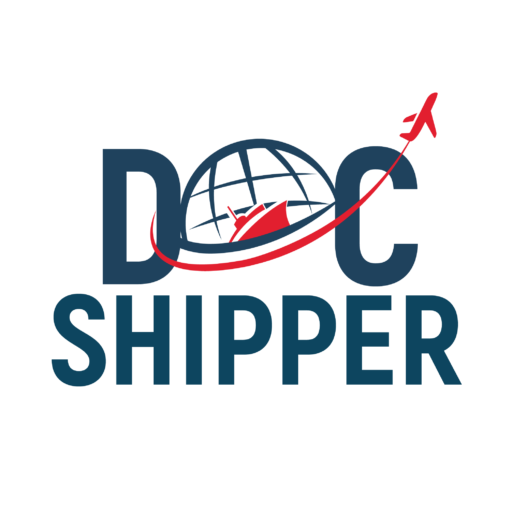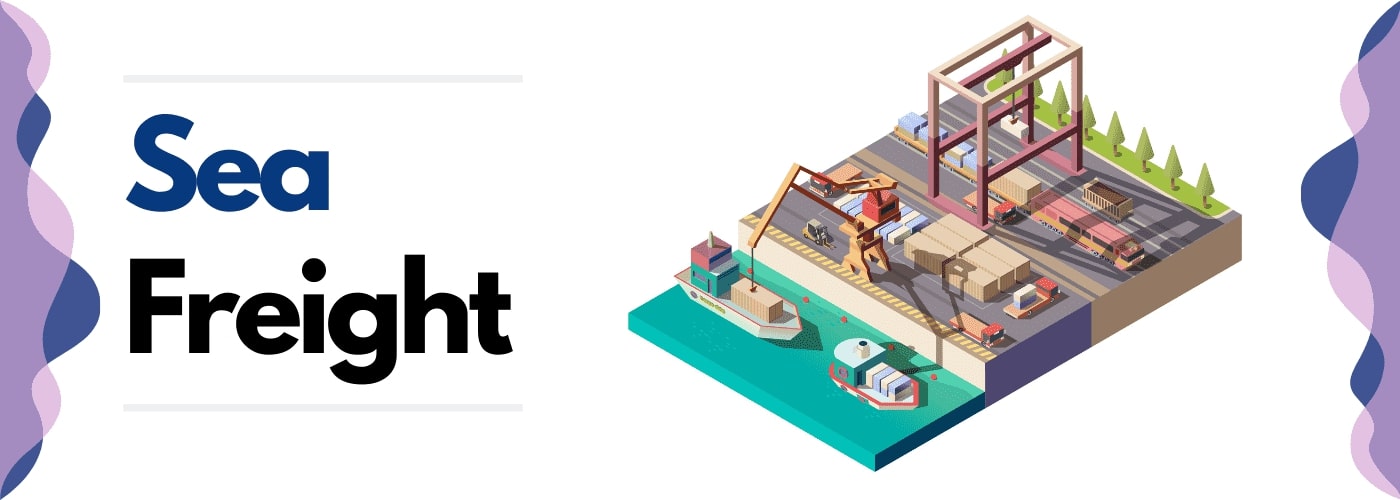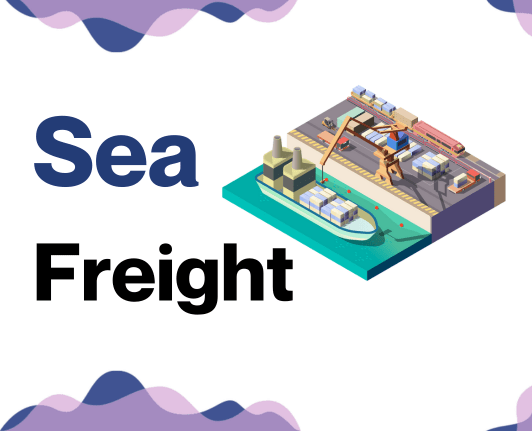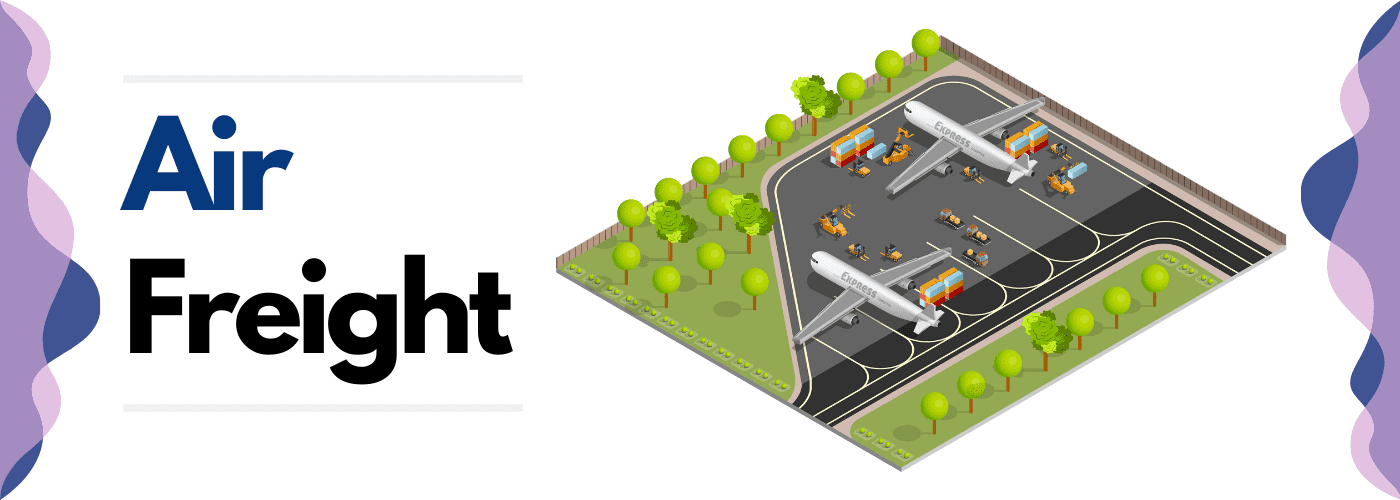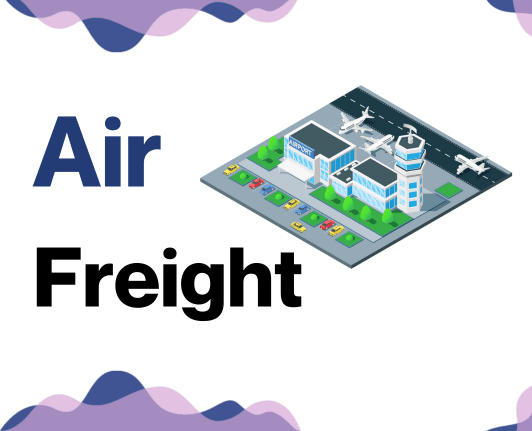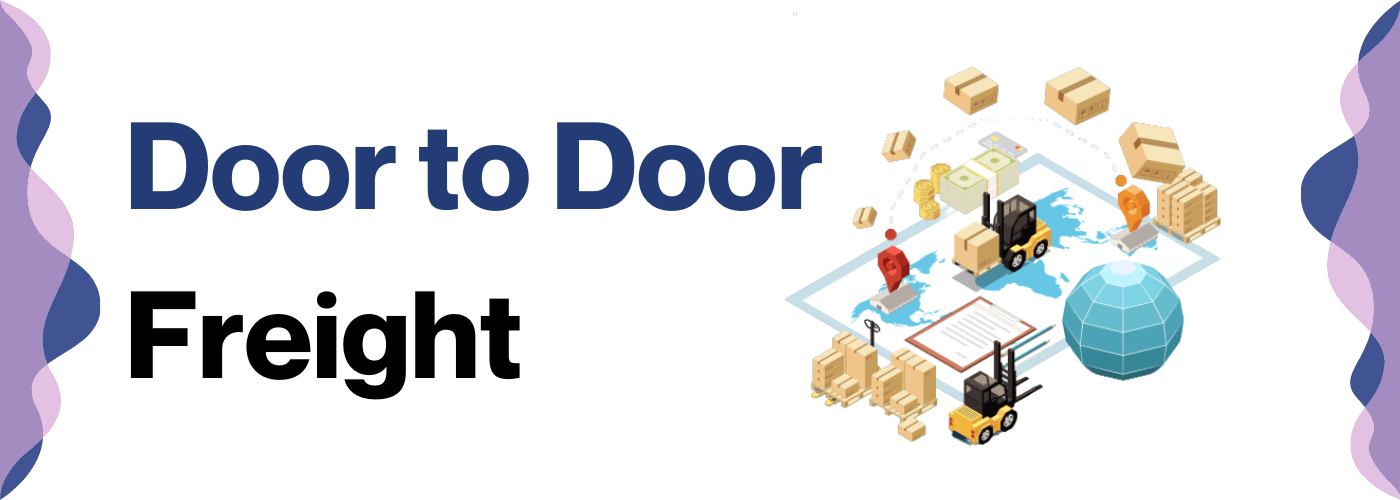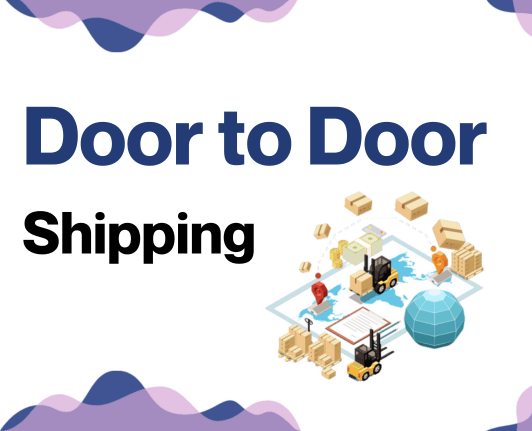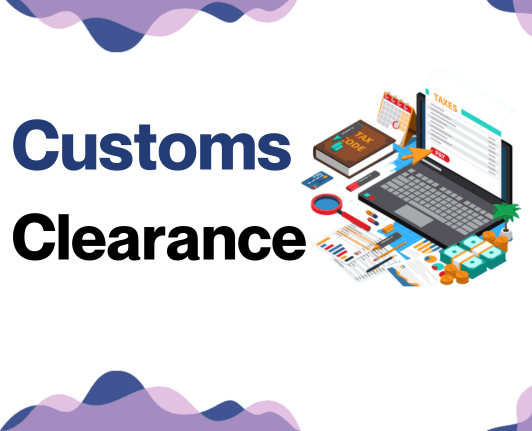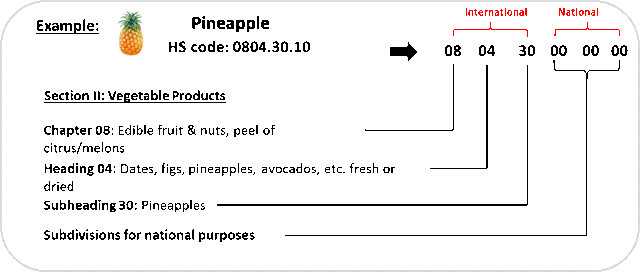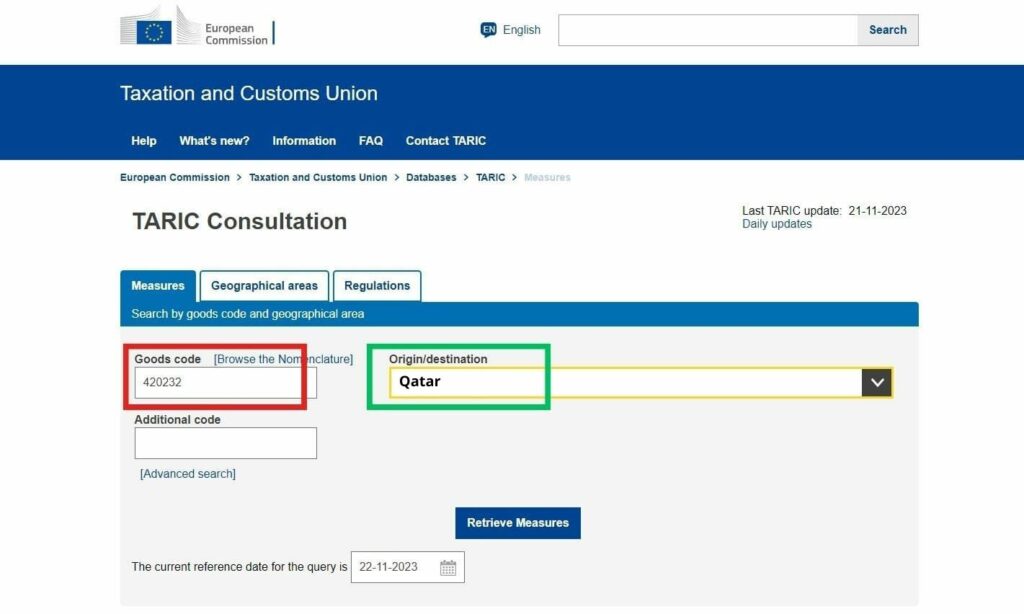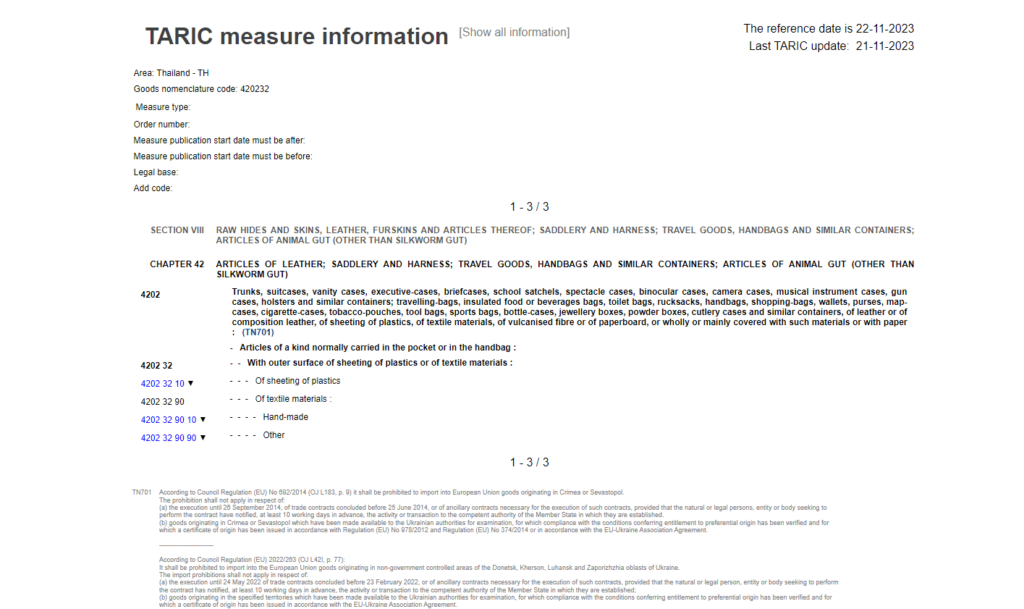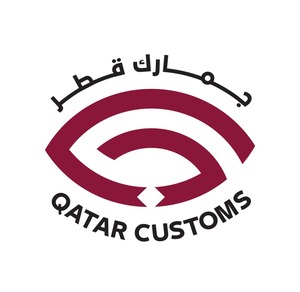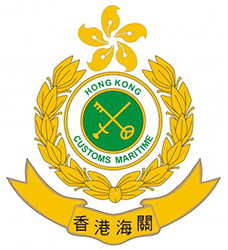Ever heard of a camel outpacing a Boeing 747? In the world of freight transport, anything's possible! That's the exciting, though often puzzling, nature of shipping goods between places as diverse as Qatar and Hong Kong. From grappling with varying rates and timeframes, to complex customs formalities, we know these hurdles can stress even the most seasoned business owners. This guide offers insight into various transport options—be it air, sea, road or rail—and breaks down customs clearance, duties, and taxes in an easy-to-digest manner. Tailored advice, particularly beneficial for businesses, is sprinkled throughout our guide. If the process still feels overwhelming, let DocShipper handle it for you! We are experienced international freight forwarders who turn your shipping challenges into solid success stories, one cargo at a time.
Table of Contents
Which are the different modes of transportation between Qatar and Hong Kong?
Sailing on the high seas or soaring through the skies - which would serve your business better for transporting goods from the futuristic skyscrapers of Hong Kong to the sandy dunes of Qatar? The answer lies in several key factors. Picture it as a game of chess, where not just the geographic distance but also trade lanes, transit times, and costs size up into your perfect game-winning strategy. Let's turbocharge your decisions in this global playing field, unpacking the pros and cons of each transport method to help you choose your silver bullet for shipping success!
How can DocShipper help?
When it comes to shipping goods from Qatar to Hong Kong, DocShipper should be your first choice. From customs clearance to administrative procedures, we handle it all, ensuring a smooth, hassle-free experience. Why get caught in the complexities of international freight when we can manage it for you? Reach out for a free estimate in less than 24 hours or consult our experts without any charges. Let us ease your shipping worries!
DocShipper Tip: Sea freight might be the best solution for you if:
- You're dealing with hefty quantities or large-scale goods. Sea freight is your go-to for maximizing space without stretching your budget.
- Your cargo doesn't have an urgent deadline, as sea freight typically has longer transit times compared to air or rail.
- Your shipping routes are between major ports, allowing you to leverage the extensive global network of sea shipping lanes.
Sea freight between Qatar and Hong Kong
Shipping goods between Qatar and Hong Kong by sea freight is as crucial as it is challenging. The two countries share a vibrant trade relationship, with colossal containers often making their way across the South China Sea. On this route, major dockyard players include Qatar's Mesaieed and Hong Kong's Kwai Tsing - busy hubs connecting key industrial areas. Moving high-volume freight via these ports is akin to sending an all-important email: it might take longer, but it's far more economical than any express method.
But many struggle with this process, like trying to complete a puzzle with missing pieces. Mistakes abound, from missing critical customs rules to baffling paperwork or misjudged shipping timings. But fret not! Clear strategies and know-how can turn these stumbling blocks into stepping stones. Stay tuned, as we elaborate on these pain points and the best practices to overcome them - think of it as your personal cheat sheet for fearless intercontinental shipping. Dive in, and let the journey of ocean shipping between Qatar and Hong Kong become a smooth sail indeed!
Main shipping ports in Qatar
Hamad Port
Location and Volume: Located in the Qatar city of Umm Al-Houl, Hamad Port is strategically positioned to serve the Gulf countries, the Indian sub-continent, the Far East, Eastern Europe, and Africa. The port is remarkable with a shipping volume of around 7 million TEU currently.
Key Trading Partners and Strategic Importance: Hamad Port's key trading partners include the United Arab Emirates, India, Saudi Arabia, and China. It serves as a significant transshipment hub in the Middle East, hosting one of the most modern automatic container terminals in the world.
Context for Businesses: If you're considering expanding your operations in the Middle East or neighboring regions, Hamad Port offers the benefit of extensive connections and sophisticated facilities, enabling a reliable and time-efficient logistics process.
Ras Laffan Port
Location and Volume: Nestled in the North-Eastern corner of Qatar, the industrial city of Ras Laffan houses the Ras Laffan Port, a significant global hub for the export of liquefied natural gas (LNG). It currently processes millions of cubic feet of LNG daily, making it one of the largest LNG exporting ports globally.
Key Trading Partners and Strategic Importance: Major trading partners served by the Ras Laffan Port include Japan, South Korea, India, and China. Its strategic importance lies in the outfitting of LNG vessels essential for the world's energy markets.
Context for Businesses: Aiming to explore opportunities in the energy sector or specifically in LNG, the immense throughput volume of the Ras Laffan Port could be crucial for your needs. It boasts state-of-the-art infrastructure and facilities for handling LNG and associated products.
Mesaieed Port
Location and Volume: Situated 40 km south of Doha, the Mesaieed Port is an industrial port specializing in bulk goods and petroleum product exports with a substantial annual handling capacity.
Key Trading Partners and Strategic Importance: Its main trading partners include India, China, the United Arab Emirates, and Japan. The port is critical in Qatar's economic diversification, enabling exports from the country's abundant natural resources.
Context for Businesses: If you're involved in the bulk goods industry or petroleum sector, Mesaieed Port may play a crucial role in your supply chain. Its extensive capabilities for handling bulk materials can streamline your operational efficiency, reaching various global markets efficiently.
Main shipping ports in Hong Kong
Port of Hong Kong
Location and Volume: Positioned at the mouth of the Pearl River, this bustling port is crucial for transportation between southern mainland China, Hong Kong, and the rest of the world, moving a striking 19.7 million TEUs in 2019.
Key Trading Partners and Strategic Importance: Some of the key trading partners for this port are mainland China, the USA, Singapore, and Japan. The port's strategic location enhances Hong Kong's role as a gateway to China making it one of the busiest ports globally.
Context for Businesses: If your company plans to tap into the rich opportunities of the Chinese or East Asian markets, the Port of Hong Kong can be a significant asset in enhancing your efficiency, given the quick turnaround times, high frequency of shipping services, and world-class infrastructure.
Modern Terminals Limited
Location and Volume: Established in Hong Kong's Kwai Chung district, Modern Terminals Limited is the second busiest operator in the port. The terminal processed over 5 million TEUs in 2019.
Key Trading Partners and Strategic Importance: It primarily serves mainland China and the US, but has an extensive network that includes Southeast Asia and Europe. The operator has an essential part in enhancing Hong Kong's role in the modern supply chain.
Context for Businesses: If your enterprise operates across multiple continents, utilizing Modern Terminals might be a strategic move to streamline your business logistics, given its connectivity and high reliability.
Container Terminal 8 West
Location and Volume: Situated in the Kwai Tsing district of Hong Kong, Container Terminal 8 West has 4 berths and handled close to 2 million TEUs in 2019.
Key Trading Partners and Strategic Importance: This terminal's strategic importance stems from serving key Asian markets, predominantly China and Japan.
Context for Businesses: If your organization is extensively engaged in Asian trade, particularly with China and Japan, the Container Terminal 8 West can provide efficient and reliable services, effectively facilitating your operational needs.
Container Terminal 9
Location and Volume: Located in Tsing Yi, Container Terminal 9 is the newest addition to Hong Kong's port, maintaining an annual throughput of around 1.7 million TEUs.
Key Trading Partners and Strategic Importance: This terminal serves a wide array of countries, with a notable partnership with East and Southeast Asian countries.
Context for Businesses: If your business seeks market penetration in East or Southeast Asian countries, Container Terminal 9 might provide the operational efficiency and smooth transportation your business requirement to ensure critical trade continuity.
River Trade Terminal
Location and Volume: Strategically located in Tuen Mun, the River Trade Terminal is specially designed to handle river cargo, and in 2019 managed more than 22 million tons of freight.
Key Trading Partners and Strategic Importance: It serves as a key trade point between Hong Kong and the various ports of Pearl River Delta.
Context for Businesses: If your operations involve substantial river cargo going to or coming from the Pearl River Delta region, River Trade Terminal can enhance your logistics performance.
Asia Container Terminals
Location and Volume: Situated in Kwai Chung, Asia Container Terminals had a throughput of around 1.6 million TEUs in 2019.
Key Trading Partners and Strategic Importance: Its key trading partners are Asian economies, with a particular focus on China and Southeast Asia.
Context for Businesses: If your business model involves regular trades with countries in Southeast Asia or China, Asia Container Terminals could be a potentially wise choice, considering its robust capacity and geographical proximity to these markets.
Should I choose FCL or LCL when shipping between Qatar and Hong Kong?
Facing a big decision on your shipment from Qatar to Hong Kong? You're probably weighing up full container load (FCL) and less than container load (LCL) also known as consolidation. This critical choice influences not only your budget but also on-time delivery and overall shipping success. In the following discussion, you'll dive into the key differences and advantages of both options. Learn how to align this decision with your specific needs, thereby ensuring seamless navigation through the world of international sea freight. Let's ensure your business runs like a well-oiled machine, leaving no room for guesswork!
LCL: Less than Container Load
Definition: LCL, or Less than Container Load, is a shipping option where your cargo shares a container with goods from other shippers.
When to Use: This option is most cost-effective and flexible for low volume consignments. Specifically, when your cargo is less than 13 to 15 CBM (cubic meters), using LCL minimizes shipping costs while ensuring safe and reliable transportation.
Example: Let’s say you own a business in Qatar selling lamps, and receive an order of 10 CBM from a customer in Hong Kong. Since your shipment doesn't demand a full container, opting for LCL would allow your cargo to share space with other shippers' goods, thereby economizing on cost.
Cost Implications: With LCL freight, charges are only based on the volume of your shipment rather than a flat fee for a whole container, making it more affordable for smaller shipments. However, the rate per CBM might be higher when compared to full container load (FCL) shipping and there would be consolidation/de-consolidation fees, but overall, it can still turnout to be cheaper for shipments less than 15 CBM.
FCL: Full Container Load
Definition: FCL, or Full Container Load, is a type of ocean freight shipping where a single container carries one shipper's cargo exclusively. This is also often referred to as FCL shipping.
When to Use: FCL becomes preferable when you're shipping a high volume of goods, specifically more than approximately 13-15 cubic meters (CBM). FCL ensures your goods stay in the same, sealed container all the way from Qatar to Hong Kong, enhancing security and reducing damage risks.
Example: For instance, a furniture business shipping a bulk order of 500 lounge chairs could utilize a 40'ft FCL container, knowing their goods won't be offloaded till they hit the Hong Kong docks.
Cost Implications: When it comes to cost, FCL is cheaper per unit when shipping large volumes. Request an FCL shipping quote from your freight forwarder to get a clearer picture of the overall cost. Typically, loading a 20'ft or a 40'ft container to full capacity significantly brings down your expense per item shipped. However, remember that the cost savings are only effective if your cargo fills the container to or near its full capacity.
Unlock hassle-free shipping
Shipping cargo from Qatar to Hong Kong has never been easier with DocShipper. Our team of ocean freight experts helps you decide between consolidation or full containers, all based on your shipment size, time constraints, and budget. We turn the often daunting task of cargo shipping into a smooth experience. Get a jump start on your business success today; reach out to DocShipper for a free, no obligation estimate.
How long does sea freight take between Qatar and Hong Kong?
Typically, sea freight between Qatar and Hong Kong can take approximately 20 to 30 days, varying based on elements such as the exact ports of shipment, the weight and nature of the cargo involved. To understand a more accurate timeline, it would be best to acquire a personalised quote from a reputable freight forwarder like DocShipper.
| Port in Qatar | Port in Hong Kong | Average Transit Time (Days) |
| Port of Doha | Hong Kong Port | 42 |
| Port of Mesaieed | Hong Kong Port | 23 |
| Port of Ras Laffan | Hong Kong Port | 26 |
| Port of Al Thakhira | Hong Kong Port | 29 |
*Please take note that these are average times and can change due to multiple factors. You can always rely on top-class freight forwarders like DocShipper for an accurate quote tailored to your specific needs.
How much does it cost to ship a container between Qatar and Hong Kong?
Getting a grasp on ocean freight rates and the shipping cost from Qatar to Hong Kong can feel like a daunting task. But don't worry, we've got your back! Though it's tough to give an exact price due to variables like point of loading, destination, carrier, nature of goods, and market fluctuations, we'll help you make sense of it. By closely working on a case-by-case basis, our expert shipping specialists will ensure that you get the most cost-effective and efficient shipping solutions tailored specifically to your needs. In shipping, there's no such thing as one-size-fits-all, and that's where our personalized touch comes in! Rest easy, your freight forwarding journey has a reliable co-pilot.
Special transportation services
Out of Gauge (OOG) Container
Definition: An OOG container, or Out of Gauge container, is a specialized shipping container designed for cargo that does not fit within the dimensions of standard containers. The goods are either too tall, wide, or long.
Suitable for: Perfect for shipping extraordinarily large items such as heavy machinery, industrial equipment, or construction materials.
Examples: This method is commonly used for cargo like wind turbines, tractors, or cranes that won't fit into regular containers.
Why it might be the best choice for you: If you're dealing with Out of Gauge cargo in your Qatar to Hong Kong shipping endeavors, this is a prime choice to ensure safety and ease of transport.
Break Bulk
Definition: Break bulk is the process of unloading and distributing part of a consolidation shipment individually. These are typically not containerized and transported separately.
Suitable for: Ideal for large, heavy items that don't fit into standard containers and are also not suitable for OOG containers.
Examples: Examples include yachts, large spools of cable, or steel beams.
Why it might be the best choice for you: If your business is dealing with exceptionally large items that even exceed the dimensions allowed in OOG containers, this method would be best for your shipping needs from Qatar to Hong Kong.
Dry Bulk
Definition: Dry bulk refers to the transportation of homogenous goods, transported unpackaged in large quantities. This method handles cargo that can be dumped or poured, like a liquid.
Suitable for: Commodities shipped in large volumes, such as raw materials like coal or grains.
Examples: Dry bulk containers would be perfect for shipping goods such as sand, barley or iron ore.
Why it might be the best choice for you: If your business deals with loose cargo loads like minerals, fertilizers, or grains and needs to transport them between Qatar and Hong Kong, this would be your go-to shipping method.
Roll-on/Roll-off (Ro-Ro)
Definition: Ro-ro is a type of vessel used for carrying vehicles. In this method, the cargo is driven directly onto the ro-ro vessel and secured, making it a very efficient option.
Suitable for: Generally used for the transportation of cars, trucks, trailers, and railway carriages.
Examples: Ro-Ro service is ideal for transporting new cars to Hong Kong or transferring construction machinery between countries.
Why it might be the best choice for you: If your business is in the automotive industry or needs to frequently move vehicles or bulky machinery, Ro-Ro services would be your top choice for transport between Qatar and Hong Kong.
Reefer Containers
Definition: Reefer containers, or refrigerated containers, are a type of shipping container with built-in refrigeration for temperature-sensitive goods.
Suitable for: Perfect for perishable goods, including food products, pharmaceuticals, or any other temperature-sensitive goods.
Examples: They can be used to ship seafood from Qatar or to keep medicines at their required temperature during transport to Hong Kong.
Why it might be the best choice for you: If your business specializes in perishables or any product that requires temperature control in transit, reefer containers would be an excellent choice for your shipping needs.
Your ideal shipping method depends entirely upon your specific needs. If you’re ready to explore these options further or need assistance identifying the right solution, DocShipper is here to guide you every step of the way. Reach out to us for a free shipping quote in less than 24 hours.
DocShipper Tip: Air freight might be the best solution for you if:
- You're up against the clock or have a non-negotiable delivery date. Air freight is your fastest bet for meeting tight timelines.
- Your shipment is on the smaller side, falling below 2 CBM. Air freight is particularly well-suited for compact cargo loads.
- Your goods are destined for locations that aren't well-served by maritime or rail options. Air freight expands your reach by connecting you to a vast array of international airports.
Air freight between Qatar and Hong Kong
Unlock the speed and reliability of air freight when shipping goods from Qatar to Hong Kong. It's like having your own personal express lane in the sky. Ideal for sending electronics, pharmaceuticals or fashion merchandise -- small, high-value items that need a quick and secure door-to-door service. You'll wish you had jumped on this jet sooner!
But, remember, rushing in without the right knowledge could be costlier than a luxury first-class ticket! Ever tried guessing the weight of a package without using scales? It's nearly impossible, right? Well, that's what happens if you don't apply the correct weight formula when taking into account the cost. Furthermore, obliviousness to best practices can drain your budget quicker than a jet burning fuel at 35,000 feet! As we delve deeper into this guide, we'll help you avoid such expensive pitfalls in your air freight journey.
Air Cargo vs Express Air Freight: How should I ship?
Moving your goods between Qatar and Hong Kong? You'll need to decide how to get them there: via a collective airline journey (that's air cargo) or a dedicated, non-stop flight (express air freight). One might fit your lead times, volume, and budget better than the other. Let's weigh up the choices and find the optimal shipping solution for your unique business needs.
Should I choose Air Cargo between Qatar and Hong Kong?
Choosing air cargo for shipping goods between Qatar and Hong Kong could be your most cost-effective and reliable option, especially if your shipments are above 100/150 kg (220/330 lbs). Airfreights, albeit their longer transit times due to fixed schedules, hold their own in terms of speed and efficiency. Carriers such as Qatar Airways Cargo and Cathay Pacific Cargo are leading players in this field, committed to your shipment's prompt and secure delivery. This option could particularly align with your budgetary needs. Explore more about their services by visiting their official sites right here; Qatar Airways Cargo and Cathay Pacific Cargo.
Should I choose Express Air Freight between Qatar and Hong Kong?
Opting for Express Air Freight, a specialized service using dedicated cargo planes sans passengers, could be your best bet for shipping goods under 1 CBM or weighing 100/150 kg (220/330 lbs). This offers an edge in speed and reliability, ideal for urgent or high-value shipments. Consider renowned firms like FedEx, UPS, or DHL known for their speedy and secure deliveries. Remember, Express Air Freight's greater cost often reflects its premium service and quicker delivery times. Reflect on your shipment needs - Express Air Freight could be your ticket to breezy deliveries between Qatar and Hong Kong.
Main international airports in Qatar
Hamad International Airport
Cargo Volume: As Qatar's main airport, Hamad moved over 2.3 Million tons of air freight in 2020, making it a prominent player in the international cargo scene.
Key Trading Partners: China, the United States, and Germany are key trading partners, providing vast opportunities for businesses to tap into these vast markets.
Strategic Importance: Serving as Qatar Airways' home base, this airport is a critical hub that provides access to over 160 international destinations. Its strategic location in the Middle East bridges the gap between East and West.
Notable Features: The airport's advanced cargo terminal can handle 1.4 million tonnes of cargo annually, accompanied by temperature-controlled facilities to maintain product quality and a dedicated live animal center.
For Your Business: If you are transporting perishables or live animals, Hamad's specialized facilities ensure your cargo is handled with utmost care maintaining its quality. Furthermore, by utilizing this strategic hub, you connect your business to a wide range of international markets providing ease and flexibility in your shipping schedule.
Al Udeid Air Base
Cargo Volume: Al Udeid, while primarily a military base, provides significant air cargo services for businesses.
Key Trading Partners: The main trading partners of this air base are the United States and countries across the Middle East.
Strategic Importance: Located just 30 kilometers from Doha, Al Udeid serves as a convenient alternative to Hamad, expanding your options when considering shipping strategies.
Notable Features: Although primarily a military base, Al Udeid has the capacity to handle substantial volumes of cargo. The air base also boasts an extensive range of facilities, including storage and warehouse provisions.
For Your Business: Leveraging Al Udeid Air Base can add flexibility and reduce congestion issues that may arise from using a single airport. This flexibility is particularly beneficial for businesses dealing with high-volume or time-sensitive shipments.
Main international airports in Hong Kong
Hong Kong International Airport
Cargo Volume: With an annual cargo turnover of over 4.5 million metric tons, Hong Kong International Airport (HKIA) is the world's busiest cargo airport.
Key Trading Partners: Main trading partners include China, the United States, Japan, Taiwan, and Singapore.
Strategic Importance: The airport is positioned as a global hub with connections to many major cities and economies around the world. It is a focal point for the Belt and Road initiative and the Greater Bay Area development.
Notable Features: HKIA boasts state-of-the-art facilities, including extensive storage and logistics services, a 24-hour air traffic control tower, an advanced duplex cargo clearance system, and a high-speed rail link to the mainland.
For Your Business: Considering the vast connections and advanced facilities, this airport could greatly enhance your business's reach and supply chain efficiency. Whether you are importing, exporting, or transiting goods, HKIA may offer greater flexibility and speed in handling your cargo.
How long does air freight take between Qatar and Hong Kong?
Shipping goods between Qatar and Hong Kong via air freight typically takes between 3-6 days on average. It's essential to remember that these times are estimates, and actual transit periods can vary according to specific departure and arrival airports, and factors like the weight and nature of the goods being shipped. For the most accurate delivery timelines, your best bet is to consult with a reputable freight forwarder, such as DocShipper.
How much does it cost to ship a parcel between Qatar and Hong Kong with air freight?
Air freight costs from Qatar to Hong Kong can average between $3 to $10 per kilogram, but it's important to note that the final cost depends on a combination of factors such as distance to and from airports, dimensions and weight of the parcel, and the nature of the goods. Because of these variables, it's difficult to provide an exact price without more specific information. However, our team is dedicated to offering the best possible rates to you on an individual basis. We take your unique needs into account in order to deliver personalized quotes. Contact us today for a free, no-obligation quote within the next 24 hours.
What is the difference between volumetric and gross weight?
Gross weight refers to the total weight of your cargo, including packaging, while volumetric weight reflects the space a package occupies in relation to its weight.
To calculate the gross weight for Air Cargo, put your shipment on a scale and note down its weight in kg. Let's say a crate of products weighs 80kg. Translating it to lbs, that's roughly 176 lbs.
Volumetric weight is a bit trickier. For Air Cargo, you need to measure your shipment's dimensions in cm (height, width, length) and multiply those together. Then, divide the result by 6000 to get the volumetric weight in kg. In Express Air Freight, the divisor is 5000.
For instance, you have a box that's 100cm high, 80cm wide, and 60cm long. For Air Cargo, you'd calculate the volumetric weight like this: (1008060)/6000, resulting in 80kg (or around 176 lbs). In Express Air Freight, the same box would have a volumetric weight of 96kg (or about 212 lbs).
The significance of these calculations lies in freight charges. Carriers charge based on whichever is higher - gross or volumetric weight. Hence, understanding these aspects helps you estimate shipping costs accurately. This way, you can make informed decisions about your international shipping operations.
DocShipper tip: Door to Door might be the best solution for you if:
- You prioritize a smooth, hassle-free shipping experience from start to finish. Door-to-door services manage the entire journey, from initial collection to ultimate delivery.
- You appreciate streamlined communication and would rather deal with one person. A dedicated agent is usually assigned to oversee every detail of your door-to-door shipment.
- You want limit the number of touchpoints for your cargo. Door-to-door services reduce the frequency of transitions between various transport methods, thereby lowering the likelihood of damage or loss.
Door to door between Qatar and Hong Kong
Navigating international shipping jargon? Here's a lifesaver: 'Door to Door' shipping. Simply put, it's an all-inclusive service that picks up your goods from point A and delivers them to point B. In our case, from Qatar straight to Hong Kong. The perks? Absolute convenience, swift handling, and less paperwork for you. Now, let's dive into its nitty-gritty!
Overview – Door to Door
Door-to-door shipping between Qatar and Hong Kong simplifies logistics for your business. This valuable service eliminates the complexity of dealing with multiple carriers and obscure paperwork, allowing you to focus on your core business. Enjoy the efficiency and convenience it brings. However, depending on certain circumstances, it might come at a slightly higher cost. Clients like you often consider it the most practical solution, highlighting its effectiveness in countering logistical challenges. Trust in its potential to address and ease your shipping concerns. Explore its workings further in this section.
Why should I use a Door to Door service between Qatar and Hong Kong?
Surviving the logistics maze without getting a colossal migraine? Mission impossible you say? Think again! Door to Door service between Qatar and Hong Kong is your remedy. Here are five compelling reasons why it's the way to go.
1. Stress-Free Process: Door to Door service removes the pain from the otherwise convoluted logistics processes. You sit back and relax, while we take care of all the moving parts, from pickup to delivery. The maze suddenly becomes a walk in the park.
2. Timely Delivery: Got an urgent cargo that cannot afford to have a layover in Timbuktu? Our seamless and well-connected network ensures rapid delivery of your shipment, avoiding unnecessary detours.
3. Customized Care: The Nightmare called 'Special Cargo': Fret no more! Door to Door service is adept at handling complex cargo with specialized care. Whether it's oversized, temperature-sensitive or high-value, we've got you covered.
4. Full Trucking Service: Stop juggling multiple contacts for different legs of the journey. With our service, the same accountability extends from initial pick up in Qatar to the final trucking in Hong Kong, streamlining the process massively.
5. Ultimate Convenience: Last but not least, convenience reigns supreme! No more puzzling over customs clearance or wrestling with administrative paperwork. Everything is pre-arranged, creating a satisfying end-to-end experience.
Your shipping doesn't have to turn into an episode of 'Cargo Nightmares'. Let Door to Door service between Qatar and Hong Kong turn your logistics worries into a breeze.
DocShipper – Door to Door specialist between Qatar and Hong Kong
Ready for hassle-free, door to door shipping from Qatar to Hong Kong? Trust DocShipper's expertise. We manage your entire shipment process, from packing to transport to customs, utilizing the most efficient shipping methods. Benefit from the convenience of a dedicated Account Executive and our assurance of stress-free service. No task is too big or too complicated for us. For a free estimate within 24 hours or to speak with our consultants, reach out to us anytime. Your seamless shipping experience begins here.
Customs clearance in Hong Kong for goods imported from Qatar
Navigating through customs clearance in Hong Kong for goods imported from Qatar is similar to solving a complex puzzle. Unexpected fees, intense paperwork, and multilayered regulations often make it a tough journey, intensified by the risk of goods being stranded at ports due to misinterpretation of duties, taxes, quotas, and licenses. Hence, mastering this labyrinth is essential. Get ready to dive deep into understanding the key aspects of this rigorous process in the following sections. Need an expert hand to guide you? At DocShipper, we stand ready to assist you across all stages for any product, from everywhere around the globe. Simply reach out with your goods' origin, value, and HS Code. We'll ensure your cargo sails smooth seas!
How to calculate duties & taxes when importing from Qatar to Hong Kong?
Unlocking the complexities of estimating duties and taxes when importing from Qatar to Hong Kong is nothing less than deciphering a cryptic code. It all starts by gathering essential information, including the country of origin, the so-called HS Code, the declared Customs Value of your goods, and the Applicable Tariff Rate. You also need to be aware of any other taxes and fees that may apply to your shipment. Identifying the country where the goods were either manufactured or produced serves as your key step into this process, forming the bedrock upon which all subsequent calculations will be made.
Step 1 - Identify the Country of Origin
Knowing the 'Country of Origin' becomes a pivot point in international shipping, and here's why.
1. Trade Agreements: Qatar and Hong Kong have unique trade agreements, each with an influence on customs duties. Identifying the country of origin quiets the confusion and gains you the import tariff benefits included in these agreements.
2. HS Code Assignment: To get the correct HS code, you need to first set the country of origin in stone. This code plays a crucial role in determining product classification and applicable tariffs.
3. Import Regulations: Different countries have distinctive regulations. Hong Kong may have specific restrictions on certain goods originating from Qatar. Knowing the origin keeps you clear of potential legal troubles.
4. Price Valuation: The value of goods often changes depending on their origin. An accurate estimate of duties and taxes hinges on getting this right.
5. Customs Clearance: Streamline your customs clearance process by stating the correct origin. It helps to avoid delays and ensures a smoother import process.
Stay informed about these trade agreements. Always double-check the latest import restrictions on the Hong Kong Customs and Excise Department's website. Make calculated decisions and let your shipping become a breeze.
Step 2 - Find the HS Code of your product
Understanding the Harmonized System Code (HS Code) of your product is pivotal for the correct categorization and smooth transportation of your goods across international borders. The harmonized system is a globally recognized classification method for products used in international trade. Each good is assigned a unique six digit code, which is acknowledged by all the countries in the world that are a part of the World Customs Organization. This system allows customs officials to identify the nature of your product and implement proper import laws and regulations accordingly.
Your most convenient option to find the HS code of your product is to inquire directly from your supplier. The suppliers are usually well-acquainted with their goods and the relevant regulations that apply to their import.
If reaching out to the supplier is not plausible, here is an easy, step-by-step process that you can follow to find your HS code.
1. Visit the linked Harmonized Tariff Schedule Lookup tool:
2. Enter the name of your product in the search bar.
3. Check the results under the Heading/Subheading column where you can find the HS code of your product.
A word of caution for you: The accuracy in choosing the HS code for your goods is of utmost importance. An incorrect code can create avoidable hassles, possible delays in the shipment, or even potential fines.
To better guide you in understanding the nitty-gritty of an HS Code, here's an infographic showing you how to read an HS code.
Step 3 - Calculate the Customs Value
Now, let's talk about the customs value. It's a fundamental, and often misunderstood, aspect of importing goods. Unlike the market value of your products, the customs value is somewhat different and it's crucial for the customs clearance process in Hong Kong.
In essence, the customs value, or CIF value, doesn't solely reflect the price of the goods. Instead, it’s a sum of three components: the price of the goods, the cost of international shipping, and insurance fees associated with the journey. For example, if your products cost $5000, shipment costs amount to $1000, and insurance costs $200, the total customs value is $6200. You'll need this value for accurate customs duty calculations. Understanding this distinction can save your business from needless complications and unexpected expenditures when importing goods from Qatar to Hong Kong.
Step 4 - Figure out the applicable Import Tariff
An import tariff is a tax imposed by a country's government on goods coming from abroad. For Hong Kong, a free port, most imports are not subject to tariffs. However, there are a few exceptions as determined by its trade policies and agreements.
To find the applicable tariff rate, follow these steps:
1. Find the product's Harmonized System (HS) code, a globally recognized coding system for products. Suppose we are importing a leather handbag from Qatar to Hong Kong, which has an HS code 420221 (handbags with outer surface of leather).
2. Based on the identified HS code, refer to the 'Hong Kong Trade and Industry Department's Trade Single Window' website, and input your HS code to find out the applicable percentage. (For this example, let's take a conforming 'nil' tariff percentage as Hong Kong has zero tariffs on most products).
3. Calculate the import duties. Import duties are usually calculated based on the product's CIF (Cost, Insurance, and Freight) value. Let's assume a CIF cost of $2000. With the tariff rate being 'nil', your import duty in this case is 0% 2000, i.e., $0.
Remember, while most imports to Hong Kong are tariff-free, always validate the tariff rates using the provided resources, as they are subject to change.
Step 5 - Consider other Import Duties and Taxes
When importing goods from Qatar to Hong Kong, understanding the array of potential import duties and taxes is a crucial step. Beyond standard tariff rates, other duties might come into play, depending on the product's nature and its country of origin.
For instance, excise duty is an indirect tax levied on certain commodities like alcohol, tobacco, or energy products. You may face charges like anti-dumping taxes if the imported product's price is lower than the 'fair market price' in its country of origin.
One vital component to factor in is Value-Added Tax (VAT). The standard VAT rate in Hong Kong is currently 0% but it's subject to change, so ensure you're checking the latest figures.
Here's a rough formula you can use to estimate your VAT costs: (Cost of the goods + Transport + Insurance + Any other taxes) VAT rate/100
An example, using hypothetical numbers, if you've imported goods worth $5000, with transport and insurance costs amounting to $500 and an excise duty of $300, the calculation would look like this: ($5000+$500+$300)0%= $0.
Remember, these are example calculations only, real-world figures will vary. Peeling back the layers of import duties, taxes and handling them efficiently can be a game-changer in terms of cost optimization for your business.
Step 6 - Calculate the Customs Duties
At step six of our customs clearance process, attention shifts to the calculation of Customs Duties for your imported goods from Qatar to Hong Kong. This critical task requires precision as you'll need to consider elements like Customs Value, VAT, and, on more specific occasions, Anti-Dumping Taxes and Excise Duty.
Imagine a situation where an import valued at $10000 carries a Customs Duty of 5% but no VAT applicable. The duties to pay would equate to $500 (5% of $10000). Now, consider the same import but with an added 20% VAT. Before VAT application, the total duty again stands at $500, and Together with VAT, this increases to $2500 ($2000 as 20% VAT on $10000 plus $500 duty).
In a scenario where the import attracts a Customs Duty, VAT, Anti-Dumping Tax of 10%, and an Excise Duty of 7%, the amounts would escalate. With Customs Duty of $500, VAT of $2000, Anti-Dumping Tax of $1000 (10% of $10000), and Excise Duty $700 (7% of $10000), the sum total of duties and taxes add up to $4200.
Navigating these complexities can be demanding, but DocShipper is committed to easing the process for you. Our world-class services ensure accurate customs clearance, ensuring you're never overcharged. Contact us today for a free quote within 24 hours, and experience our commitment to first-rate, hassle-free service worldwide.
Does DocShipper charge customs fees?
Navigating customs charges can be complex. As your customs broker in Qatar and Hong Kong, DocShipper doesn't bill you for customs duties - those go directly to the government. What we do charge for are customs clearance services, helping your goods breeze through customs without a hitch. To keep everything transparent, we provide documents from the customs office proving that you're only paying what's necessary. So, while there might be fees, they're all legitimate and vital to getting your shipment to its destination stress-free.
Contact Details for Customs Authorities
Qatar Customs
Official name: General Authority of Customs
Official website: http://www.customs.gov.qa/
Hong Kong Customs
Official Name: Customs and Excise Department, Hong Kong SAR.
Official Website: https://www.customs.gov.hk/
Required documents for customs clearance
Understanding which documents are crucial for successful customs clearance can be challenging. This section critically explains the Bill of Lading, Packing List, Certificate of Origin, and Documents of Conformity (CE standard) to help you avoid headaches at the customs station. Let's make global shipping less daunting.
Bill of Lading
When shipping goods from Qatar to Hong Kong, the Bill of Lading (BoL) is your logistics lifeline. This crucial document serves two major roles—it's your receipt for freight services and also a legally binding agreement that transfers the ownership of goods. It's like the green light for your shipment, signaling your transporter to set course from Doha to Victoria Harbor.
Imagine the BoL as your 'trade passport', and in today's digital era, you have the benefit of an electronic, or 'telex', release. With a telex release, the shipper doesn't need the original document, reducing delays and smoothing your goods' voyage.
And if you're sending cargo through the sky? The Air Waybill (AWB) is your go-to document—an air freight equivalent of the BoL.
Remember, correctly issued BoL or AWB documents can be the difference between a snag-free trip or a logistical nightmare. It's vital to dot your I's and cross your T's when preparing these documents.
Packing List
The packing list acts as your freight's passport when shipping between Qatar and Hong Kong. Picture it as a detailed inventory, listing every item contained within your shipment, from industrial machinery parts to designer clothes. For your business, the stakes are high. Include specifics such as quantities, descriptions, and weights, keeping accuracy as your compass. Imagine a box of auto parts lost in wording or mis-flagged due to a hastily scribbled packing list. It could be a logistical nightmare that disrupts the supply line of your car assembly plant in Sheung Shui. Acknowledge that your packing list is irreplaceable in both sea and air freight. It's not just a document; it's a key to smooth transit, keeping customs in both ends satisfied and your goods on the move. An honest, complete packing list means fewer customs headaches, saving valuable time and avoiding extra storage costs.
Commercial Invoice
Crafting your Commercial Invoice between Qatar and Hong Kong accurately is paramount. This document needs to present comprehensive details about your goods, such as the price, quantity, description, HS codes, country of origin and buyer-seller details. Any discrepancies can lead to customs delays, so ensure it aligns perfectly with the Bill of Lading or Air Waybill. For instance, if you're shipping 500 LED screens, the invoice should mirror this exact quantity and description on all paperwork. Our tip? Regularly check Hong Kong's customs regulations as they might vary, and remember to include any required licenses. Avoid generic descriptions to prevent misunderstandings, and your cargo will be one step closer to a smooth customs clearance.
Certificate of Origin
Navigating the customs waters between Qatar and Hong Kong? You'll need a Certificate of Origin (CoO). This crucial document, confirming your goods' production location, can unlock preferential duty rates - potentially saving you substantial amounts! For instance, an electronics company exporting smartphones manufactured in Qatar needs a CoO that clearly stipulates this. Don't forget to highlight the manufacturing country in your CoO; it's often the golden ticket to smoother, more affordable shipping. Remember, in the world of international freight, every detail counts. Stay ahead with your CoO.
Get Started with DocShipper
Has the customs clearance process left you overwhelmed? Free yourself from onerous paperwork and confusion. Let DocShipper manage every step of your customs clearance, providing you with a worry-free, efficient service. What's next? Get in touch and receive a comprehensive quote in under 24 hours. Eliminate stress, choose DocShipper, your freight-forwarding partner for smooth shipping between Qatar and Hong Kong.
Prohibited and Restricted items when importing into Hong Kong
Understanding the quirks of what's allowed - and what's not - can be a real headache when shipping to Hong Kong. Let's dismantle these roadblocks together, and get familiar with the prohibited and restricted items. Now your goods can sail through customs without a hiccup.
Restricted Products
- Pharmaceutical Products: For shipping medicines or pharmaceutical products, you have to apply for a 'Certificate for Pharmaceutical Products' from the Department of Health, Hong Kong. Here's their website for more information: Department of Health, Hong Kong.
- Controlled Chemicals: To ship any kind of controlled chemicals, you have to secure a 'License to Import/Export Controlled Chemicals' from the Customs and Excise Department, Hong Kong. Check out their site for more details: Customs and Excise Department, Hong Kong.
- Endangered Species Item: In case you're planning to ship anything related to the endangered species, you have to secure a 'License to Import/Export Endangered Species Items' from the Agriculture, Fisheries, and Conservation Department, Hong Kong. Visit their site to know more: Agriculture, Fisheries, and Conservation Department, Hong Kong.
- Optical Disc Mastering and Replication Equipment: To move any optical disc mastering and replication equipment, you have to apply for a 'License for Import/Export Optical Disc Mastering and Replication Equipment' from the Office of the Communications Authority. Here is where you can get more details: Office of the Communications Authority.
- Radioactive Substances: To ship radioactive substances, you have to get a 'License to Import/Export Radioactive Substances' from the Radiation Health Unit, Hong Kong. Check out their website here: Radiation Health Unit, Hong Kong.
Remember, always err on the side of caution when shipping restricted items to Hong Kong. If unsure about any regulation, it's best to contact the relevant department for guidance and clarification.
Prohibited products
- Weapons and ammunition
- Drug paraphernalia
- Illegal drugs
- Endangered animal or plant species
- Counterfeit money and goods
- Unauthorized copies of intellectual property
- Obscene and indecent articles
- Rough diamonds
- Controlled Chemicals
- Food waste, animal and plant waste
- Items that may threaten public health, such as certain chemicals
- Radioactive substances.
Please note that this list may be subject to change over time, and it's always best to consult the latest regulations and directives from the Hong Kong Customs and Excise Department or a trusted freight forwarder before arranging any shipment.
Are there any trade agreements between Qatar and Hong Kong?
Currently, there are no formal Free Trade Agreements (FTAs) or Economic Partnership Agreements (EPAs) between Qatar and Hong Kong. However, both regions continuously explore trade opportunities with solid diplomatic relations helping facilitate these discussions. For instance, the Hong Kong Trade Development Council (HKTDC) often cooperates with Qatari organizations to explore potential collaboration. While immediate benefits in terms of reduced tariffs may not be available, ongoing dialogues signify promising prospects for future trade enhancements. Stay updated on such developments to strategically plan your shipping activities.
Qatar - Hong Kong trade and economic relationship
Qatar and Hong Kong share a robust and vibrant economic relationship, dating back to the 1990s. Over the years, they've built strong trade links in various sectors, notably in oil and gas, electronics, and financial services. An impressive milestone came in 2003 when Hong Kong began importing liquified natural gas (LNG) from Qatar. Fast-forward to today, Qatar is now Hong Kong's strategic LNG supplier, which significantly bolsters Hong Kong's energy security. Trade volume between them crossed HKD 2.5 billion in 2020, with Qatari investments in Hong Kong touching around $500 million. This mutual economic commitment stands as a testament to their prosperous bilateral trade relations, giving businesses ample opportunities to operate and prosper.
Your Next Step with DocShipper
Understanding the seas of international freight between Qatar and Hong Kong can be complex and tiresome. Whether you're new to the game or looking for a flawless execution, DocShipper can be your guide. With expert handling of customs clearances to administration hassles, we offer you peace in trading chaos. Tap into our expertise today and turn your shipping concerns into solutions! Contact us now.
Additional logistics services
Explore more logistics solutions with DocShipper! Learn how we help streamline your supply chain, handling everything from storage to distribution, ensuring your goods arrive on-time and hassle-free. Discover true end-to-end service.
Warehousing and storage
Finding the right warehouse is no small feat, especially when shipping goods between Qatar and Hong Kong. You need a trusted, reliable partner to ensure conditions like temperature are precisely monitored, handling everything from electronics to perishables. So, whether you fear your chocolates may melt or your tech gadgets may suffer, fret not. Accuracy and efficiency comes first in our warehouse. Curious to learn more? Get the full scoop on our dedicated page: Warehousing.
Packaging and repackaging
Selecting the right packaging when shipping goods from Qatar to Hong Kong is critical. Whether it's delicate ceramics or sturdy machinery, entrust your cargo to an expert team who knows how to package and repackage efficiently. Imagine your fragile pearl jewelry encased in custom-fitted bubble wrap, or your heavy industry equipment secured with specialty crating solutions – that's the safety net a reliable agent can provide.
Cargo insurance
Covering goods from warehouse to warehouse, cargo insurance is your protective net against transportation hiccups. Unlike fire insurance, it safeguards goods from risks beyond just fires – from loading accidents to sea storms. Think your cargo toppling overboard during oceanic turbulence, now, instead of a hefty loss, you’ll have a safety net to fall back on. Prevention is better than cure!
Supplier Management (Sourcing)
Shipping from Qatar to Hong Kong and dealing with suppliers sounds daunting, right? DocShipper turns that challenge into an opportunity. They provide full support, from sourcing to supervising your production process in Asia and East Europe. Don't worry about language barriers, they've got that covered too. Real-life example? Imagine them by your side, clarifying business norms, and getting you a great deal with a trusted supplier. More info on our dedicated page: Sourcing services.
Personal effects shipping
When moving from Qatar to Hong Kong, or vice versa, your cherished mementos and bulky items deserve special attention. Our Personal Effects Shipping service ensures those grandma's paintings or your favorite lounge chair are handled with utmost care. Think of it like this: a professional piano mover focused on your personal belongings, ensuring a smooth, worry-free move.
Quality Control
When shipping from Qatar to Hong Kong, quality control is critical. It acts as your watchful eye, catching errors in manufacturing or customization before you hit the shipping stage. Take, for instance, a batch of Qatari luxury textiles. Quality control can ensure that each piece meets standards, saving you from potential costly returns or reputational damage in Hong Kong's thriving luxury market.
Product compliance services
Ensuring product compliance is key when moving goods across borders. Our firm offers comprehensive laboratory testing services to obtain necessary certifications. We help you meet all regulations at your destination, thereby avoiding potential fines and items being held at customs. Consider, for instance, a tech company shipping electronics; without proper compliance checks, they may face significant disruptions due to regulatory non-compliance. We ensure this doesn't become your headache.
FAQ | For 1st-time importers between Qatar and Hong Kong
What is the necessary paperwork during shipping between Qatar and Hong Kong?
In managing your shipment from Qatar to Hong Kong, we at DocShipper will need to ensure all necessary paperwork is in order. Key documents include the bill of lading for sea freight, or an air waybill if goods are transported by air. Don't worry, we’ll take care of these for you. Alongside this, we’ll need you to provide a packing list and the commercial invoice. Please note, additional documents may be required depending on the nature of your goods. This can include material safety data sheets, certifications, and more. Ensuring all paperwork is accurately completed is important for a smooth shipping process.
Do I need a customs broker while importing in Hong Kong?
While it's not obligatory to use a customs broker in Hong Kong, we emphatically recommend it. Navigating customs procedures can be complex, with numerous specific requirements and obligatory documents to handle. Enlisting a customs broker simplifies these intricate processes, ensuring your consignment sails through without any hitches. At DocShipper, we can offer this professional assistance. When handling the majority of shipments, we act as your representative at customs, expertly taking care of everything needed to get your cargo through swiftly and efficiently. Trust us to deftly facilitate smooth customs interactions for your imports to Hong Kong.
Can air freight be cheaper than sea freight between Qatar and Hong Kong?
Air or sea freight being cheaper between Qatar and Hong Kong depends on various factors such as route, weight, and volume. Generally, if your cargo is less than 1.5 Cubic Meters or 300 kg (660 lbs), air freight could be a more cost-effective option. In these scenarios, we recommend considering air freight for your shipping needs. At DocShipper, we ensure to provide the most competitive rates tailored to your specific requirements. Your dedicated account executive will assist in determining the best freight solution for your business needs.
Do I need to pay insurance while importing my goods to Hong Kong?
While we, at DocShipper, affirm that insurance is not compulsory for shipping goods, be it locally or internationally, it is highly advised. This is due to the array of potential incidents that may occur, causing damage, loss, or theft of your goods during transit. Therefore, insuring your import to Hong Kong, or any location, provides that extra layer of security, ensuring the value of your goods is protected regardless of unpredictable situations.
What is the cheapest way to ship to Hong Kong from Qatar?
Given the geographical distance between Qatar and Hong Kong, sea freight is generally the cheapest option. Although slower than air freight, it provides considerable savings, vital for large shipments. However, for time-sensitive cargo, we recommend combining sea and air freight to balance both cost and efficiency. Contact us at DocShipper for expert advice tailored to your specific needs.
EXW, FOB, or CIF?
Choosing between EXW, FOB, or CIF depends on the relationship you have with your supplier. While suppliers typically sell under EXW (at their factory door) or FOB (including all local charges until the terminal of origin), they may not be logistics professionals. That's where we can help. At DocShipper, we can manage the international freight, the receiving process, and everything in between. As experienced freight forwarders, we're committed to streamlining your logistics and providing comprehensive door-to-door services. This alleviates any potential stress or confusion, allowing you to focus on what you do best: running your business. Trust us to handle the journey of your goods.
Goods have arrived at my port in Hong Kong, how do I get them delivered to the final destination?
When your goods arrive at Hong Kong's port, and DocShipper manages them under the CIF/CFR incoterms, you'll need to contact a customs broker or freight forwarder for clearance, import charge payment, and final delivery. On the flip side, we can also handle comprehensive services under the DAP incoterms. Just ensure you discuss these details with your dedicated account executive for confirmation.
Does your quotation include all cost?
Absolutely. We're transparent about our pricing. Our quotes cover all costs with the exception of duties and taxes at the destination. Not to worry, though. Just reach out to your dedicated account executive who can provide you an estimate on these. With us, there are no hidden fees, ensuring that there are no unpleasant surprises for you.
